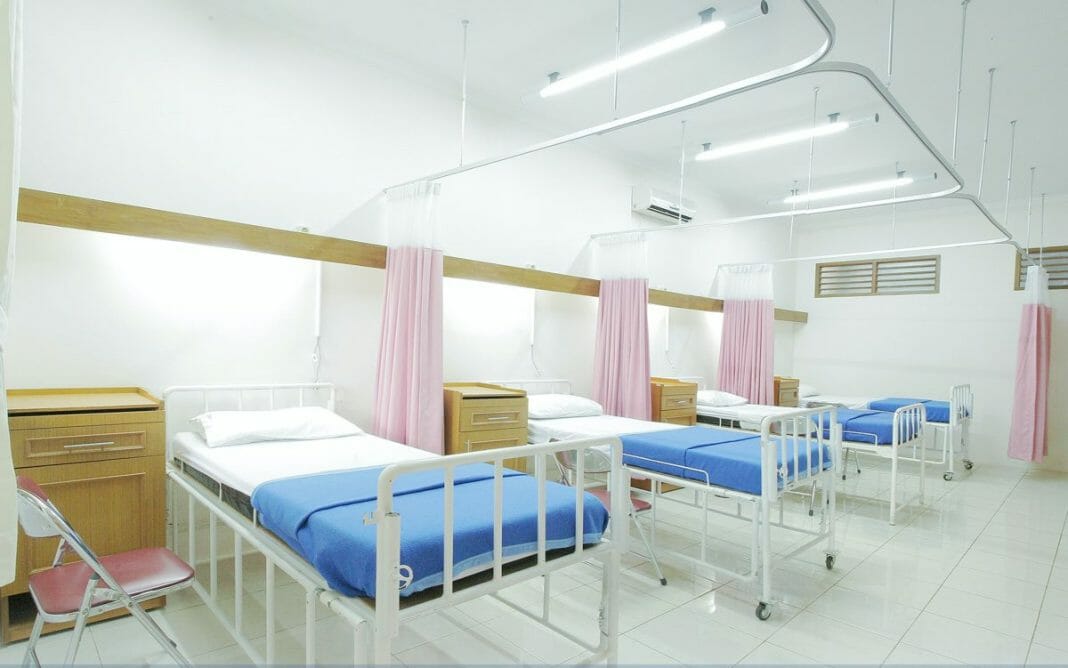Hospitals are a vital part of our society. They provide a necessary service to the community and help people when they are at their most vulnerable. However, not all hospitals are created equal. There are some things that every hospital should make sure it has to be able to properly serve its patients. Here are eight of those things.
1. Curtains
An often overlooked aspect of hospital design, curtains are a necessary part of any patient room. They provide privacy and help make the space more comfortable for both patients and caregivers alike. The medical curtain used in hospitals is specially designed to be flame-retardant and bacteria-resistant. Additionally, the curtains should be easy for caregivers to open and close to easily access the patient. If the hospital does not have curtains, it is important to invest in them.
2. Hygiene Products
Hospitals should always be stocked with the necessary supplies to ensure that all areas are kept clean and hygienic. This includes items such as disinfectant wipes, hand sanitizer, soap, and paper towels. By providing these products, hospitals can help reduce the spread of diseases and promote a healthier environment for everyone who enters. Additionally, having adequate supplies of these items will help keep hospital staff safe from potential contamination. These supplies must include:
- Disinfectant wipes: These are ideal for quick cleaning of surfaces and medical equipment.
- Hand sanitizer: This is essential for maintaining a safe environment in hospitals, especially during times when hand washing is not possible or practical.
- Soap: It’s important to have plenty of soap available, both in the bathrooms and other areas where it may be needed.
- Paper towels: Paper towels are also necessary to help keep surfaces clean and dry after disinfecting them with wipes or sanitizing gel.
By stocking up on these supplies, hospitals can ensure that their environments remain safe and hygienic for all who enter. This can help protect patients from potential infections while also helping to reduce healthcare costs associated with treating illnesses caused by poor hygiene practices.
3. Temperature Control
Hospitals should have the appropriate temperature control systems in place to ensure a comfortable environment for patients. When temperatures are too hot or too cold, it can increase stress levels and make it more difficult for patients to recover. Additionally, hospitals should also be equipped with air conditioning and humidifiers to help reduce airborne infection risks. By investing in the proper temperature control systems, hospitals can help create a better atmosphere for healing and recovery.
4. Adequate Lighting
Lighting is an important factor when it comes to creating a pleasant atmosphere in any medical facility. Proper lighting will not only provide comfort for both patients and staff but can also contribute to the better overall care and clinical outcomes. Hospitals should make sure that all public areas, patient rooms, and operating rooms are adequately lit. This will help create a more relaxed environment and contribute to better patient outcomes. In some cases, it may be beneficial to use natural light in certain areas of the hospital as well. Natural light can help reduce stress and anxiety levels for patients and provide a calming atmosphere. Additionally, investing in energy-efficient lighting systems can reduce operating costs while still providing adequate lighting throughout the facility.
5. Comfortable Seating
Comfortable seating is also essential in any hospital setting. Patients who have been discharged after a long stay may need someplace comfortable to rest while waiting for their ride home or meeting with their doctor. Additionally, friends and family members of patients often spend hours at the hospital waiting for news about their loved one’s condition. Thus, hospitals must provide adequate seating in these areas so people can rest comfortably during their visits. And, having comfortable seating can also help contribute to a more calming atmosphere in the hospital. Investing in chairs and couches that are ergonomically designed for comfort is key to creating an inviting space for all who enter.
6. Technology
In today’s digital age, having access to the latest technology can make all the difference when it comes to providing quality care to patients. Hospitals should make sure that they have the necessary equipment and software to support better care. This includes electronic medical records, telemedicine services, secure email systems for communication with doctors, and patient portals for the self-management of chronic conditions. Investing in these technologies can help reduce healthcare costs while also improving the quality of care provided to patients. For instance, having access to electronic health records can help doctors quickly diagnose and treat illnesses, while telemedicine services can provide medical care to those in remote locations.
7. Cleanliness
Maintaining a clean hospital is essential for both patient safety and comfort. Regularly cleaning, disinfecting, and sanitizing all surfaces throughout the facility should be done regularly to help prevent the spread of germs and infections. Additionally, hospitals should make sure that ventilation systems are properly maintained and filtered to reduce the risk of airborne illnesses. Finally, adequate waste disposal measures should also be implemented to ensure that all medical waste is disposed of safely.
8. Accessibility
Finally, hospitals must remain accessible to all people regardless of their mobility or disability needs. This includes providing wheelchair-accessible entrances, elevators, and ramps to all areas of the hospital. Moreover, any staff should be properly trained in how to interact with disabled patients in a respectful and accommodating manner. For example, hospitals should strive to provide interpreters and other assistive services so that all patients can access the care they need. And, if needed, hospitals should also provide medical equipment such as wheelchairs and stretchers for those who require them.
By having a well-stocked supply of essential items, the proper temperature control systems, adequate lighting, comfortable seating, and up-to-date technology all in place, hospitals can ensure that their facilities are safe, comfortable, and conducive to providing the best possible care for their patients. This will help foster an environment where healing and recovery are made easier for everyone involved. By making the necessary investments into these areas of hospital infrastructure, healthcare providers can create a better quality of life for their patients while also helping to reduce costs associated with treating illnesses caused by poor hygiene practices or inadequate care.



